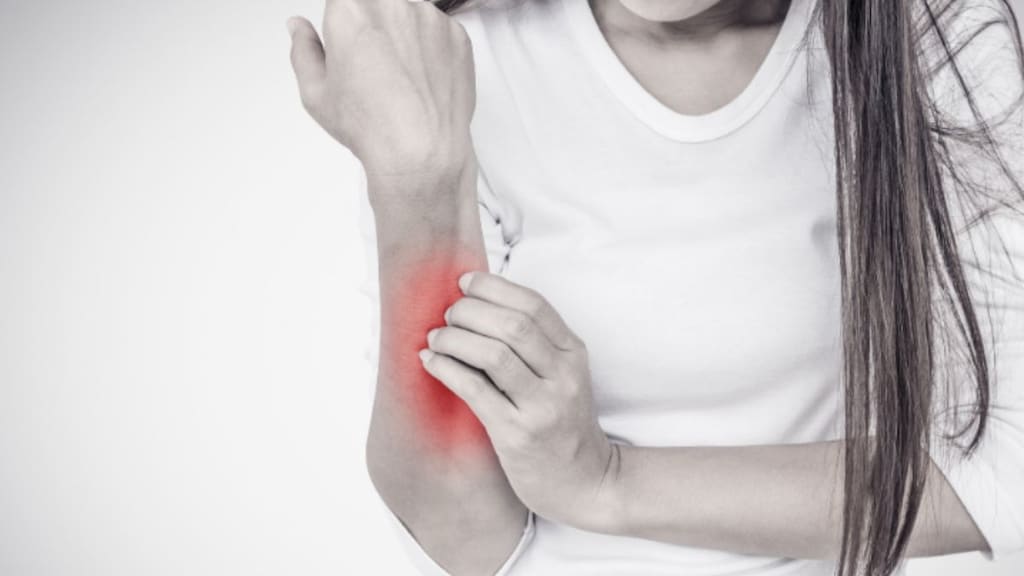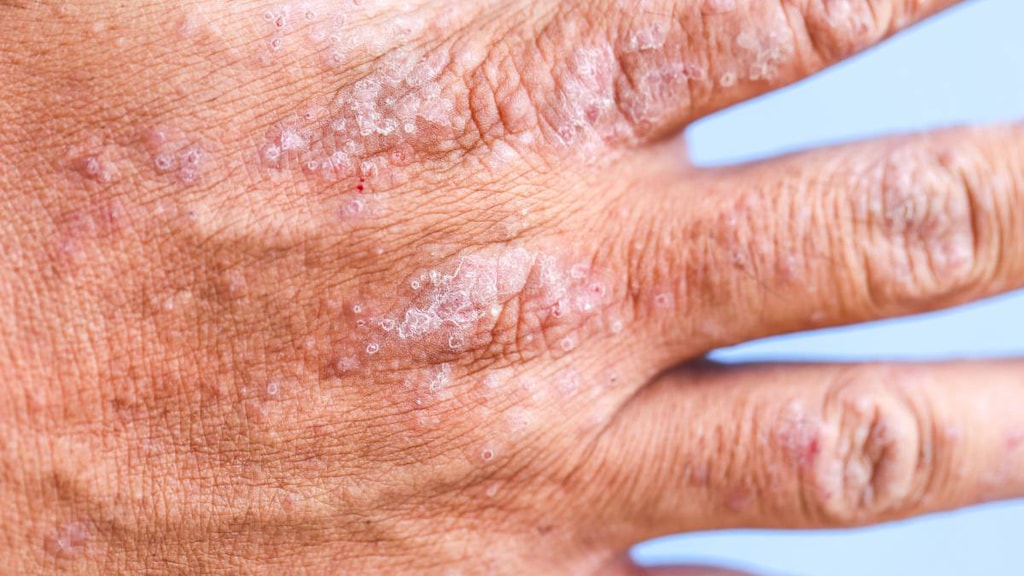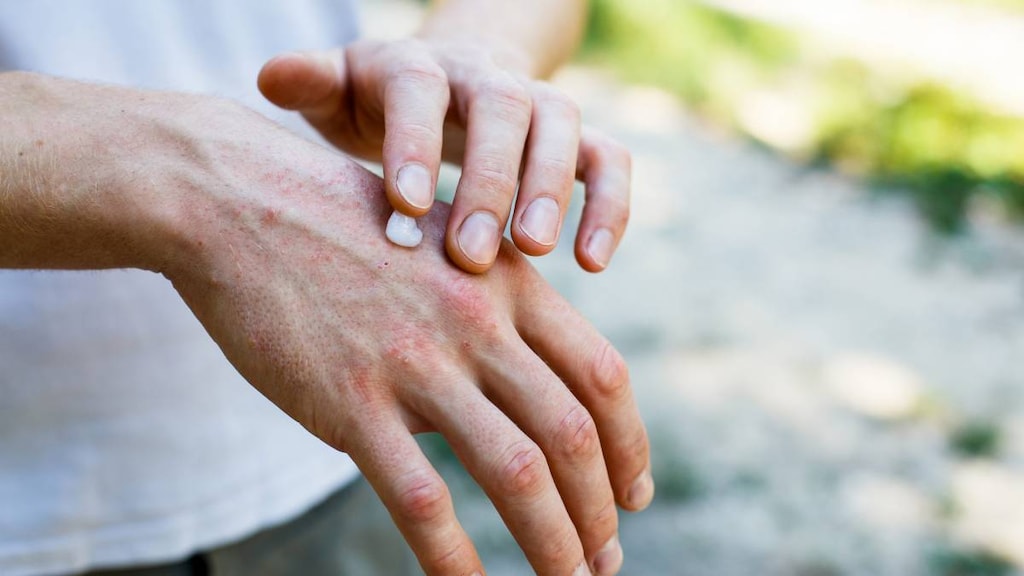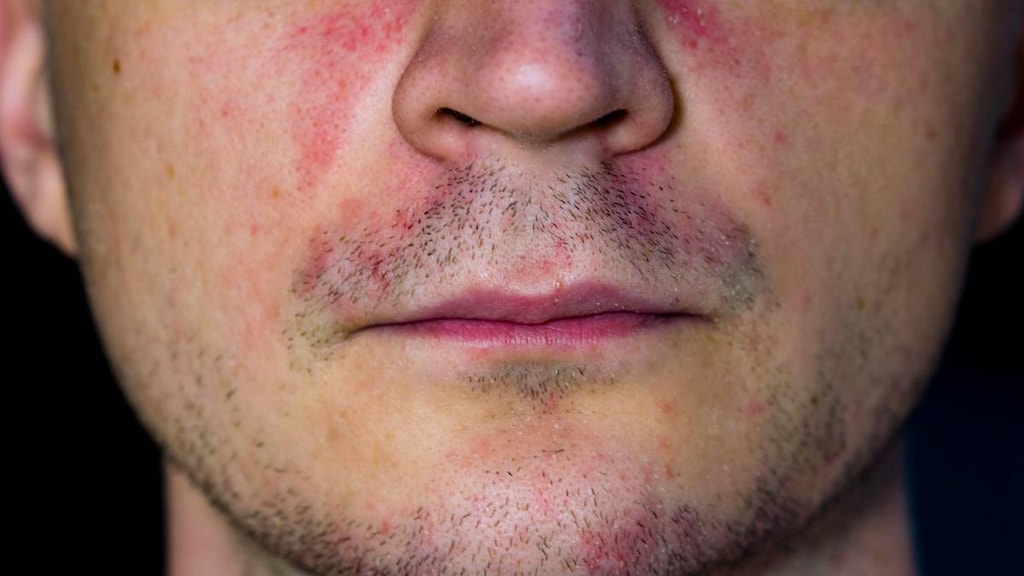Boxed Warning
Appropriate use:
Long-term safety of topical calcineurin inhibitors has not been established. Continuous long-term use of topical calcineurin inhibitors, including pimecrolimus, in any age group should be avoided, and application limited to areas of involvement with atopic dermatitis.
Malignancy:
Although a causal relationship has not been established, rare cases of malignancy (eg, skin malignancy, lymphoma) have been reported in patients treated with topical calcineurin inhibitors including pimecrolimus.
Pediatrics:
Pimecrolimus is not indicated for use in children younger than 2 years.
Dosage Forms
Excipient information presented when available (limited, particularly for generics); consult specific product labeling.
Cream, External:
Elidel: 1% (30 g, 60 g, 100 g) [contains benzyl alcohol, cetyl alcohol, propylene glycol]
Generic: 1% (30 g, 60 g, 100 g)
Pharmacology
Mechanism of Action
Penetrates inflamed epidermis to inhibit T cell activation by blocking transcription of proinflammatory cytokine genes such as interleukin-2, interferon gamma (Th1-type), interleukin-4, and interleukin-10 (Th2-type). Pimecrolimus binds to the intracellular protein FKBP-12, inhibiting calcineurin, which blocks cytokine transcription and inhibits T-cell activation. Prevents release of inflammatory cytokines and mediators from mast cells in vitro after stimulation by antigen/IgE.
Pharmacokinetics/Pharmacodynamics
Absorption
Topical: Low systemic absorption; blood concentration of pimecrolimus was routinely <2 ng/mL with treatment of atopic dermatitis in adult patients (13% to 62% BSA involvement); blood concentration of pimecrolimus was <3 ng/mL in 26 pediatric patients 2 to 14 years of age with atopic dermatitis (20% to 69% BSA involvement). Detectable blood levels were observed in a higher proportion of children as compared to adults and may be due to the larger surface area to body mass ratio seen in pediatric patients (Menter 2009a).
Metabolism
Hepatic via cytochrome (CYP) P450 3A4
Excretion
Feces (78.4% as metabolites; <1% as unchanged drug)
Onset of Action
Time to significant improvement: 8 days (Wellington 2001)
Time to Peak
Serum: Topical: 2 to 6 hours
Half-Life Elimination
Terminal: Oral: 30 to 40 hours
Protein Binding
99.5%, primarily to various lipoproteins
Use: Labeled Indications
Atopic dermatitis: Second-line therapy for short-term and noncontinuous long-term treatment of mild to moderate atopic dermatitis in nonimmunocompromised patients 2 years and older who have failed to respond adequately to other topical prescription treatments, or when those treatments are not advisable.
Use: Off Label
Intertriginous and facial psoriasisayes
Data from a double-blind, randomized, vehicle-controlled study support the use of pimecrolimus in the treatment of inverse psoriasis. In patients with this condition, pimecrolimus was effective, safe, and well-tolerated Gribetz 2004.
Based on the
Oral lichen planusb
Data from short-term controlled trials demonstrate that topical pimecrolimus is effective in improving clinical symptoms of oral lichen planus and may be considered an alternative therapy for patients who do not respond to topical steroids.
Vitiligocyes
Data from a meta-analysis and randomized, controlled trials suggest that pimecrolimus may be effective in the management of vitiligo Esfandiarpour 2006, Lee 2019, Stinco 2009.
European Dermatology Forum consensus guidelines support the use of topical calcineurin inhibitors as first-line therapy for patients with vitiligo; use should be limited to the head and neck regions
Contraindications
Hypersensitivity to pimecrolimus or any component of the formulation
Dosage and Administration
Dosing: Adult
Atopic dermatitis (mild to moderate): Topical: Apply thin layer to affected area twice daily. Note: Limit application to involved areas. Discontinue use when symptoms have resolved; re-evaluate if symptoms persist >6 weeks.
Oral lichen planus (off-label use): Topical: Apply twice daily for 1 month (Passeron 2007; Swift 2005; Volz 2008)
Psoriasis (off-label use): Topical: Apply twice daily (Gribetz 2004; Menter 2009b)
Vitiligo (off-label use): Topical: Apply twice daily for 6 months. Treatment beyond 12 months may be useful; long-term safety has not been established. (Esfandiarpour 2009; Stinco 2009; Taieb 2013)
Dosing: Geriatric
Refer to adult dosing.
Dosing: Pediatric
Atopic dermatitis (mild-moderate): Children ≥2 years and Adolescents: Topical: Apply a thin layer to affected area twice daily; limit application to affected areas only; discontinue therapy when symptoms have resolved; re-evaluate patient if symptoms persist >6 weeks.
Administration
Topical: Apply a thin layer to affected skin. Limit application to areas of involvement. Do not use with occlusive dressings. Burning at the application site is most common in first few days but improves over time. Discontinue use when symptoms have resolved; re-evaluate if symptoms persist >6 weeks. Moisturizers may be applied after use of pimecrolimus cream. Wash hands before and after use.
Oral lichen planus (off-label use): Apply to affected oral mucosa, cover with a thin layer of gauze to delay dilution with saliva (Volz 2008). Eating, drinking, or chewing gum was not allowed for 30 minutes after application (Passeron 2007).
Storage
Store at 25°C (77°F); excursions permitted to 15°C to 30°C (59°F to 86°F); do not freeze.
Drug Interactions
CYP3A4 Inhibitors (Moderate): May decrease the metabolism of Pimecrolimus. Exceptions: Grapefruit Juice. Monitor therapy
CYP3A4 Inhibitors (Strong): May decrease the metabolism of Pimecrolimus. Monitor therapy
Immunosuppressants: Pimecrolimus may enhance the adverse/toxic effect of Immunosuppressants. Exceptions: Cytarabine (Liposomal). Avoid combination
Adverse Reactions
>10%:
Central nervous system: Headache (children and adolescents 11% to 25%; adults 7%), fever (children and adolescents 13%; adults 1%)
Infection: Influenza (3% to 13%)
Local: Local burning (adults 26%; children and adolescents 2% to 8%; tends to resolve/improve as lesions resolve), application site reaction (adults 15%; children and adolescents 2%)
Respiratory: Nasopharyngitis (infants, children, and adolescents 10% to 27%; adults 8%), upper respiratory tract infection (children and adolescents 14% to 19%; adults 4%), cough (children and adolescents 9% to 16%; adults 2%), bronchitis (children and adolescents ≤11%; adults ≤2%)
1% to 10%:
Dermatologic: Folliculitis (adults 6%; children and adolescents 1%), skin infection (5% to 6%), impetigo (4%), warts (children and adolescents ≤3%), acne vulgaris (≤2%), herpes simplex dermatitis (≤2%), molluscum contagiosum (children and adolescents ≤2%), urticaria (≤1%)
Gastrointestinal: Diarrhea (children and adolescents 1% to 8%; adults ≤2%), gastroenteritis (children and adolescents ≤7%; adults 2%), vomiting (1% to 4%), constipation (children and adolescents ≤4%), abdominal pain (≤3%), toothache (≤3%), nausea (1% to 2%)
Genitourinary: Dysmenorrhea (1% to 2%)
Hypersensitivity: Hypersensitivity (3% to 5%)
Infection: Viral infection (children and adolescents ≤7%), herpes simplex infection (≤4%), bacterial infection (1% to 2%), staphylococcal infection (1% to 2%), varicella (≤1%)
Local: Local irritation (adults ≤6%; children and adolescents ≤1%), local pruritus (1% to 6%), localized erythema (≤2%)
Neuromuscular & skeletal: Arthralgia (≤2%), back pain (≤2%)
Ocular: Conjunctivitis (≤2% to 3%), eye infection (≤1%)
Otic: Otic infection (1% to 6%), otitis media (1% to 3%)
Respiratory: Sore throat (4% to 8%), pharyngitis (children and adolescents 1% to 8%; adults 1%), tonsillitis (children and adolescents ≤6%; adults <1%), asthma (3% to 4%), asthma aggravated (children and adolescents ≤4%), streptococcal pharyngitis (children and adolescents 3%), nasal congestion (1% to 3%), sinusitis (1% to 3%), epistaxis (≤3%), dyspnea (≤2%), flu-like symptoms (≤2%), pneumonia (≤2%), rhinitis (≤2%), rhinorrhea (children and adolescents ≤2%), viral upper respiratory tract infection (≤2%), wheezing (children and adolescents ≤1%)
Miscellaneous: Laceration (children and adolescents ≤2%)
<1%, postmarketing, and/or case reports: Anaphylaxis, angioedema, eczema (herpeticum), eye irritation (following application near eyes), facial edema, flushing (ethanol-associated), lymphadenopathy, malignant neoplasm (basal cell carcinoma, squamous cell carcinoma, malignant melanoma, malignant lymphoma), skin discoloration
Warnings/Precautions
Concerns related to adverse effects:
- Infection: Patients with atopic dermatitis are predisposed to skin infections; therapy has been associated with an increased risk of developing eczema herpeticum, varicella zoster, and herpes simplex. Do not apply to areas of active bacterial or viral infection; local infections at the treatment site should be resolved prior to therapy.
- Local symptoms: May cause local symptoms (eg, burning, pruritus, soreness, stinging) during first few days of treatment; usually self-resolving as atopic dermatitis lesions heal.
- Lymphadenopathy: May be associated with development of lymphadenopathy; possible infectious causes should be investigated. Discontinue use in patients with unknown cause of lymphadenopathy or acute infectious mononucleosis.
- Malignancy: [US Boxed Warning]: Topical calcineurin inhibitors (including pimecrolimus) have been associated with rare cases of lymphoma and skin malignancy; avoid use on malignant or premalignant skin conditions (eg, cutaneous T-cell lymphoma).
- Skin papilloma: Skin papilloma (warts) have been observed with use; discontinue use if there is worsening of skin papillomas or they do not respond to conventional treatment.
Disease-related concerns:
- Atopic dermatitis: Diagnosis should be reconfirmed if sign/symptoms do not improve within 6 weeks of treatment.
- Erythroderma: Safety not established in patients with generalized erythroderma.
- Skin diseases which may increase systemic absorption: Not recommended for use in patients with Netherton's syndrome or skin conditions which may increase the potential for systemic absorption.
Special populations:
- Immunocompromised patients: Should not be used in immunocompromised patients, including patients on concomitant systemic immunosuppressive therapy.
- Pediatric: [US Boxed Warning]: Use of pimecrolimus in children <2 years of age is not recommended, particularly since the effect on immune system development is unknown.
Dosage form specific issues:
- Benzyl alcohol and derivatives: Some dosage forms may contain benzyl alcohol; large amounts of benzyl alcohol (≥99 mg/kg/day) have been associated with a potentially fatal toxicity (“gasping syndrome”) in neonates; the “gasping syndrome” consists of metabolic acidosis, respiratory distress, gasping respirations, CNS dysfunction (including convulsions, intracranial hemorrhage), hypotension, and cardiovascular collapse (AAP ["Inactive" 1997]; CDC, 1982); some data suggests that benzoate displaces bilirubin from protein binding sites (Ahlfors, 2001); avoid or use dosage forms containing benzyl alcohol with caution in neonates. See manufacturer’s labeling.
Other warnings/precautions:
- Appropriate use: [US Boxed Warning]: Continuous long-term use of calcineurin inhibitors (including pimecrolimus) should be avoided and application of cream should be limited to areas of involvement with atopic dermatitis. Safety of intermittent use for >1 year has not been established.
- Sun exposure: Avoid artificial or natural sunlight exposure, even when pimecrolimus is not on the skin.
Pregnancy
Pregnancy Risk Factor
C
Pregnancy Considerations
Adverse events were not observed in animal reproduction studies following topical application.
Patient Education
What is this drug used for?
- It is used to treat eczema.
- It may be given to you for other reasons. Talk with the doctor.
Frequently reported side effects of this drug
- Skin irritation
- Stinging
- Itching or soreness
- Common cold symptoms
- Flu-like symptoms
- Sensation of warmth
- Headache
- Stuffy nose
- Sore throat
Other side effects of this drug: Talk with your doctor right away if you have any of these signs of:
- Infection
- Skin infection
- Swollen glands
- Night sweats
- Excessive weight loss
- Warts
- Cold sores
- Skin ulcers
- Skin growths
- Mole changes
- Signs of a significant reaction like wheezing; chest tightness; fever; itching; bad cough; blue skin color; seizures; or swelling of face, lips, tongue, or throat.
Note: This is not a comprehensive list of all side effects. Talk to your doctor if you have questions.
Consumer Information Use and Disclaimer: This information should not be used to decide whether or not to take this medicine or any other medicine. Only the healthcare provider has the knowledge and training to decide which medicines are right for a specific patient. This information does not endorse any medicine as safe, effective, or approved for treating any patient or health condition. This is only a brief summary of general information about this medicine. It does NOT include all information about the possible uses, directions, warnings, precautions, interactions, adverse effects, or risks that may apply to this medicine. This information is not specific medical advice and does not replace information you receive from the healthcare provider. You must talk with the healthcare provider for complete information about the risks and benefits of using this medicine.



